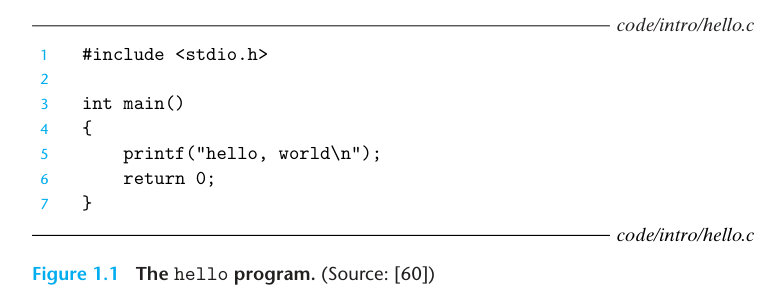
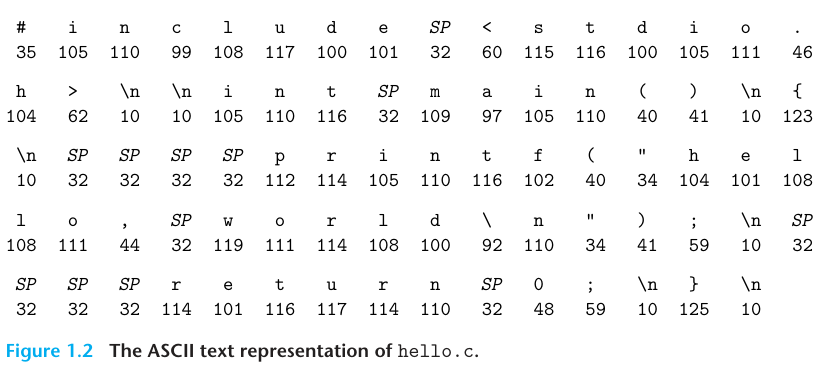
1.1 Information Is Bits + Context
All information in a system is represented as a bunch of bits.
1.2 Programs Are Translated by Other Programs into Different Forms
The gcc compiler driver reads the source file hello.c and translated into an execuable object file hello. The translation is performed in the sequence of four phases:
- Preprocessing phase.
- Compliation phase.
- Assembly phase.
- Linking phase.
The programs that perform these phases (preprocessor, compilor, assembler, and linker) is known collectively as the compliation system.
Here is the phase figure:

1.3 It Pays to Understand How Compilation Systems Work
None.
1.4 Processors Read and Interpret Instructions Stored in Memory
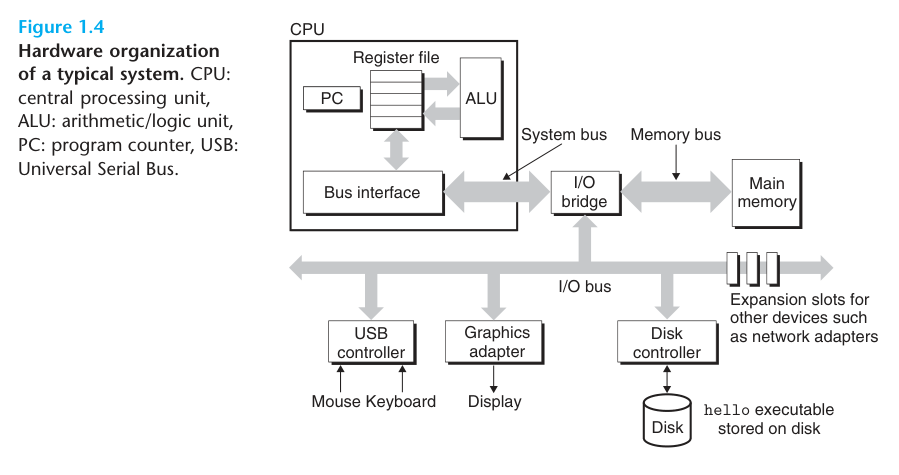
PC: program counter ALU: arithmetic/logic unit
1.4.1 Hardware Organization of a System:
Buses
I/O Devices
I/O: Input/Output
Main Memory
Physically, main memory consists of a collection of dynamic random access memory (DRAM).
Processor
1.4.2 Running the hello Program
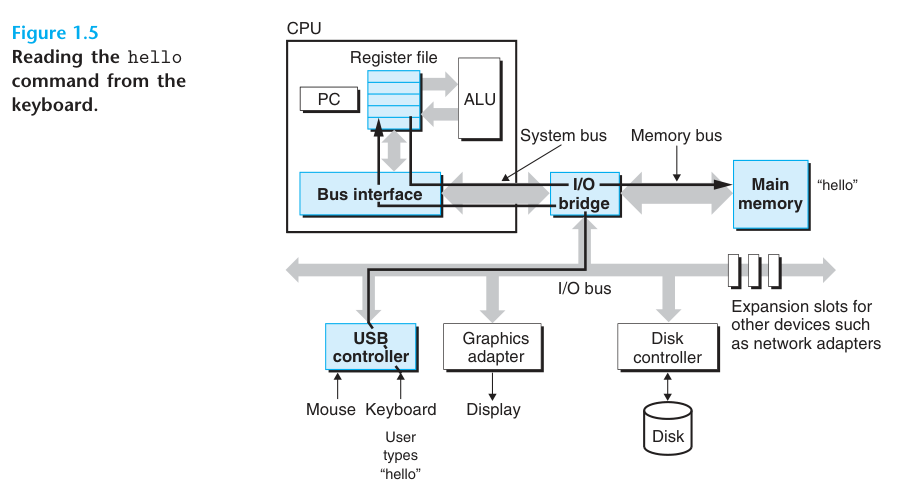
DMA: direct memory access
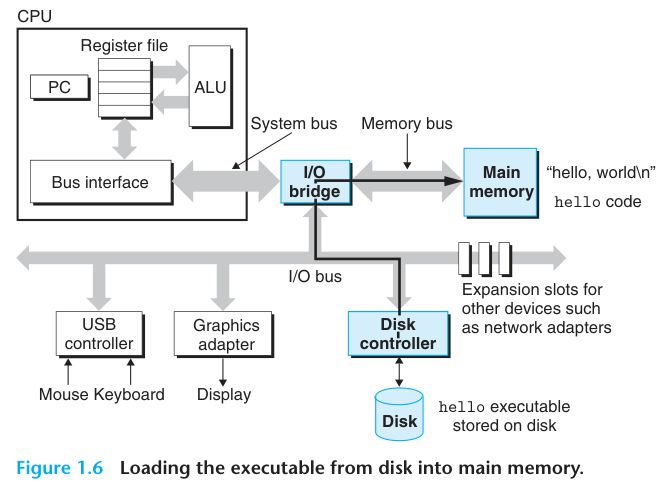

1.5 Caches Matter
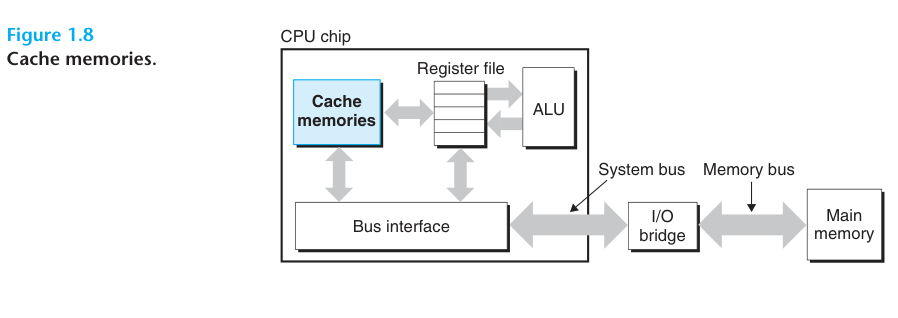
The L1 and L2 caches are implemented with a hardware technology known as static random access memory (SRAM)
1.6 Storage Devices Form a Hierarchy
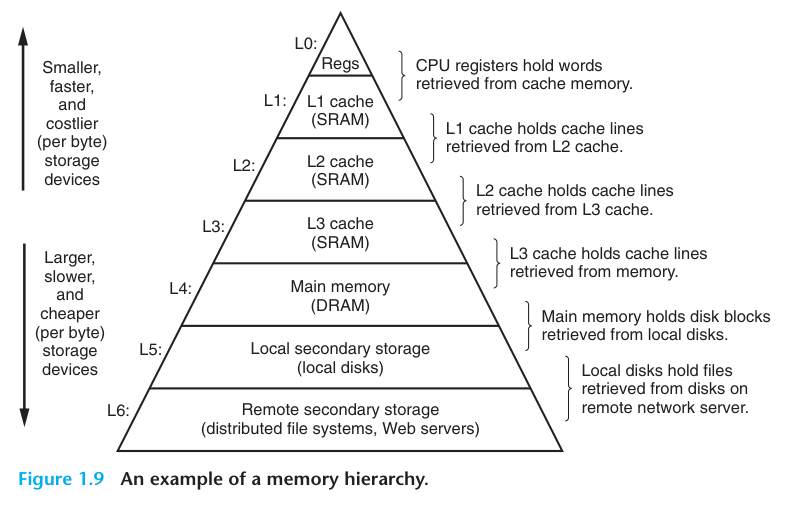
1.7 The Operating System Manages the Hardware

The operating system has two primary purposes:
- to protect the hardware from misuse by runaway applications
- to provide applications with simple and uniform mechanisms for manipulating complicated and often wildly different low-level hardware devices.
It achieves both goal via the foundamental abstractions: processes, virtual memory, and files.

1.7.1 Processes
When the operating system decides to transfer control from the current process to some new process, it performs a context switch by saving the context of the current process, restoring the context of the new process, and then passing control to the new process.
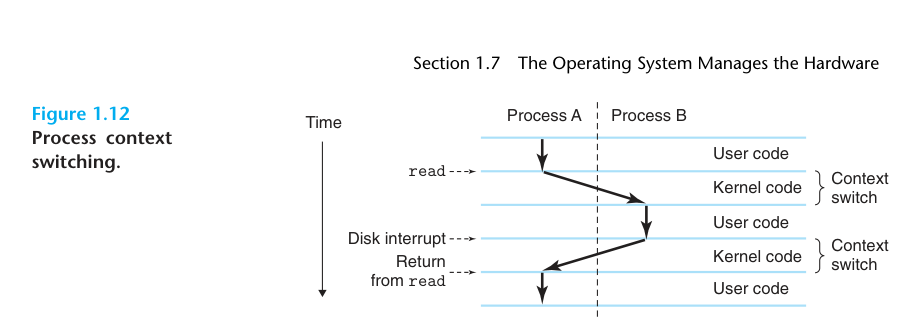
1.7.2 Threads
Each thread runs in the context of the process and sharing the same code and global data.
1.7.3 Virtual Memory
Each process has the same uniform view of memory, which is known as its virtual address space.
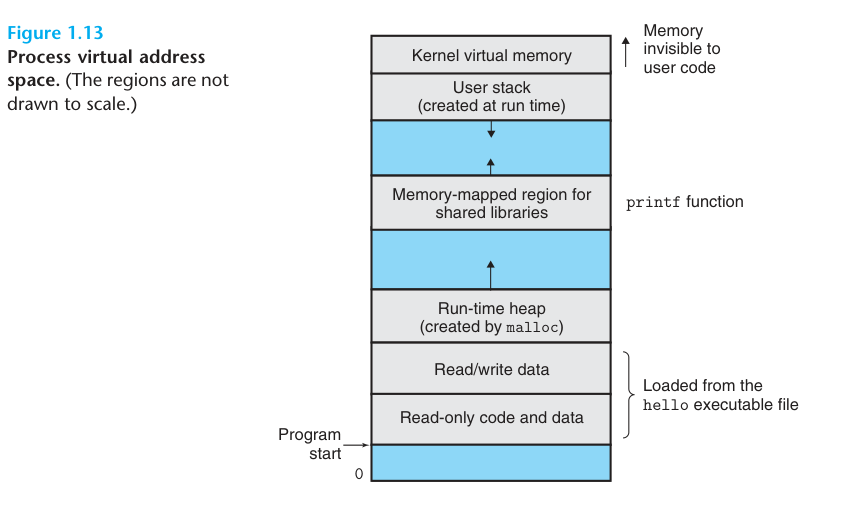
The virtual address space seen by each process consists of a number of well defined areas, starting from low to high:
- Program code and data.
- Heap.
- Shared libraries.
- Stack.
- kernel virtual memory.
1.7.4 Files
A file is a sequence of bytes. Every I/O devices is modeled as a file. All input and output in the system is performed by reading and writing files, using a small set of system calls known as Unix I/O.
1.8 Systems Communicate with Other Systems Using Networks
The network can be viewed as just another I/O devices.
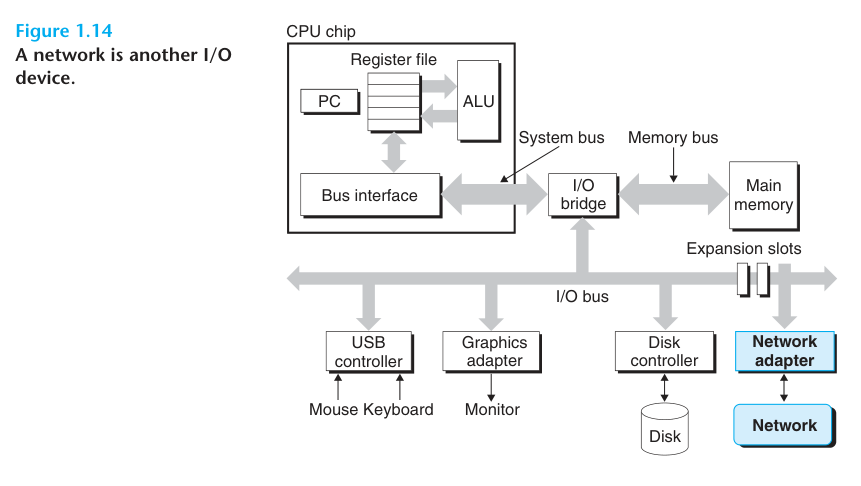
The system copies a sequence of bytes from main memory to the network adapter rather than disk controller, which helps the data flow across the network to another mechine instead of a local disk drive.

1.9 Important Themes
1.9.1 Amdahl’s law
The main idea of Amdahl’s law is that when we speed up one part of a system effect on the overall all system performance depends on both how sigficant this part was and how much it sped up.
Suppose some part of the system requires a fraction α of this time, and that we improve its performence by a factor of k.
$$ T_{new} = (1-\alpha)T_{\text{old}} + (\alpha T_{\text{old}})/k = T_{\text{old}}[(1-\alpha) + \alpha/k] $$
$$ S = \frac{T_{\text{old}}}{T_{\text{new}}} = \frac{1}{(1-\alpha) + \alpha/k} $$
1.9.2 Concurrency and Parallelism
Thread-Level Concurrency
Traditionally, this concurrent execution was only simulated, much as a juggler keeps multiple balls flying through the air.
Multiprocessor systems have more recently become commonplace with the advent of multi-core processors and hyperthreading.
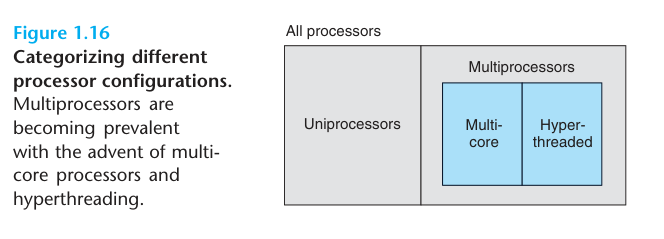
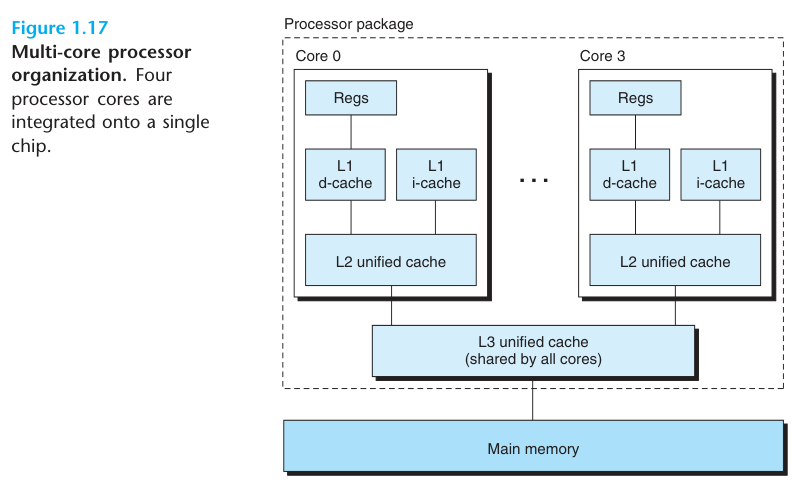
Hyperthreading also called simultaneous multi-threading. Whereas a conventional processor requires around 20,000 clock style to shift between different threads, a hyperthreaded processor decides which of its threads to execute on a cycle-by-cycle basis.
Instruction-Level Parallelism
Processors that can sustain execution rates faster than 1 instruction per cycle are known as superscalar processors.
Single-Instruction, Multiple-Data(SIMD) Parallelism
1.9.3 The Importance of Abstractions in Computer Systems

1.10 Summary
Storage devices that are higher in the hierarchy serve as caches for devices that are lower in the hierarchy.
The operating system kernel serves as an intermediary between the application and the hardware. It provides three fundamental abstractions:
- Files are abstractions for I/O devices.
- Virtual memory is an abstraction for both main memory and disk.
- Processes are abstractions for the processor, main memory, and I/O devices.